It looks like you're using an Ad Blocker.
Please white-list or disable AboveTopSecret.com in your ad-blocking tool.
Thank you.
Some features of ATS will be disabled while you continue to use an ad-blocker.
share:
a reply to: urbanghost
A Scythian griffon or a Thracian dragon? Ok, I'll admit it could also be a Scythian griffon. Either way, it seems like another thing that was brought along for the ride.
The dragonesque brooch you show there (as they like to call them) seems to have developed from the beastie, or so I've read.
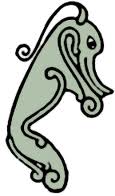
A Scythian griffon or a Thracian dragon? Ok, I'll admit it could also be a Scythian griffon. Either way, it seems like another thing that was brought along for the ride.
The dragonesque brooch you show there (as they like to call them) seems to have developed from the beastie, or so I've read.

originally posted by: beansidheThat's the first time I've seen that since the inexplicable figure (bottom right) on the 'Samson' stone:
Is there a reason why its called the Samson Stone? We have a Samson stone in Wales as well. The figure on the bottom right does look a lot like the one on the welsh cross and the pattern on the legs of the figure look a lot like ones on a stone that has an eight spoked wheel.
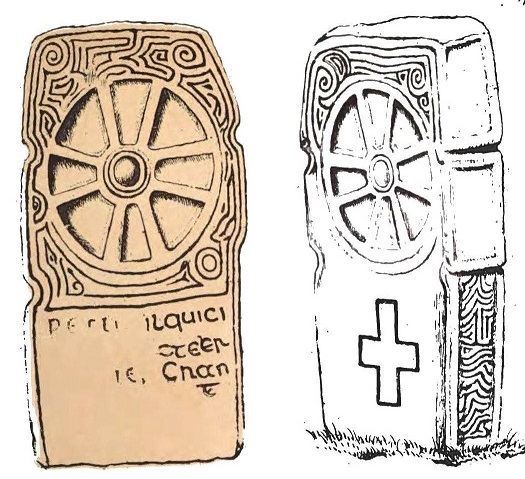
a reply to: beansidhe
Do you know the word labyrinth comes from labyr the double crescent axe?
My take on the tall thin stones with the labyrinth dude:
The labyrinth in the guys belly is a symbol of the soul/womb/tabernacle(inner court of), that is the gate like you said. The soul is the intermediary between heaven and earth, Spirit and Flesh. The head looks like its meant to look like the sun, or like a halo, which is symbolic of divinity (concepts in my sig link). The two dragons above are like the 2 flanking angels, like the cherubim that flank the flaming sword, which is shown above as the multiple crosses. Put them together and you have the caduceus the symbol of Hermes/Mercury/Lug. This is a threshold symbol like the cherubim woven into the veil.
Hermes is the mediator, the Logos, and also Jesus is the mediator the Logos.
Do you know the word labyrinth comes from labyr the double crescent axe?
My take on the tall thin stones with the labyrinth dude:
The labyrinth in the guys belly is a symbol of the soul/womb/tabernacle(inner court of), that is the gate like you said. The soul is the intermediary between heaven and earth, Spirit and Flesh. The head looks like its meant to look like the sun, or like a halo, which is symbolic of divinity (concepts in my sig link). The two dragons above are like the 2 flanking angels, like the cherubim that flank the flaming sword, which is shown above as the multiple crosses. Put them together and you have the caduceus the symbol of Hermes/Mercury/Lug. This is a threshold symbol like the cherubim woven into the veil.
Hermes is the mediator, the Logos, and also Jesus is the mediator the Logos.
originally posted by: beansidhe
a reply to: urbanghost
A Scythian griffon or a Thracian dragon? Ok, I'll admit it could also be a Scythian griffon. Either way, it seems like another thing that was brought along for the ride.
The dragonesque brooch you show there (as they like to call them) seems to have developed from the beastie, or so I've read.
The dragonesque figure from celtic art dates to the 1st or 2nd century, pictish beasties come from around the 7th century. The celtic is much older and the pictish is thought to have come from the celtic. The pictish beastie is thought to be a sea monster or a dolphin.
originally posted by: beansidhe
a reply to: urbanghost
A Scythian griffon or a Thracian dragon?
All references call them Thracian Griffins, even the coins.
Thracian griffins 1
Thracian Griffins 2
Thracian Griffin 3
originally posted by: urbanghost
originally posted by: beansidhe
a reply to: urbanghost
A Scythian griffon or a Thracian dragon? Ok, I'll admit it could also be a Scythian griffon. Either way, it seems like another thing that was brought along for the ride.
The dragonesque brooch you show there (as they like to call them) seems to have developed from the beastie, or so I've read.
The dragonesque figure from celtic art dates to the 1st or 2nd century, pictish beasties come from around the 7th century. The celtic is much older and the pictish is thought to have come from the celtic. The pictish beastie is thought to be a sea monster or a dolphin.
Well, that's really the premise of the thread, I guess. Some people have said it's a dolphin, but then -so what? What does that mean? Why would they have carved it over and over again, and yet no tales of dolphins exist? They knew what dolphins looked like, so what would the significance be of giving it limbs? The standard interpretations are lacking, in my view.
A Kelpie is another suggestion, but why carve it? To appease it? Maybe.
It's a strange symbol, because it's always carved in the same position, always hovering above things and always with curled feet. It might be astrological, since it's often much, much bigger than other animals.
We came to the conclusion a while ago that the dates are wrong on a number of these stones. A lot of them are dated in accordance with the belief that Constantine the Great brought Christianity to Britain, and missionaries began teaching gospel afterwards. But this is not true at all. And it really skews our perception of what 'pagan' really meant.
The Samson stone is a good example. It's called the Samson stone because it shows the story of Samson striking a Philistine with the jaw bone of an ass. Therefore it must belong to the 6th+ century, because the Picts wouldn't have known about the old testament before then. And yet St.Ninian was over in the 4th century, and seemed to get on ok.
We have a writer in Carthage stating that Scotland was 'subdued to Christ' in the 2nd/3rd century.
It suits writers to assume that the Picts couldn't have done anything on their own -there's scant evidence in general history books to contradict this. But it's not true. The beastie appears on class 1 and 2 stones, so it's really hard to date it with any certainty. It existed for hundreds of years and now - nothing. No remnants of it remain; it's been obliterated from our history.
originally posted by: zardust
a reply to: beansidhe
Do you know the word labyrinth comes from labyr the double crescent axe?
I did not know that!
Labrys (Greek: λάβρυς, lábrys) is the term for a symmetric doubleheaded axe originally from Crete in Greece, one of the oldest symbols of Greek civilization; to the Romans, it was known as a bipennis.[1] The symbol was commonly associated with female divinities.
The double-bitted axe remains a forestry tool to this day,[2] and the labrys certainly functioned as a tool and hewing axe[3] before it was invested with symbolic function.[4] Labrys symbolism is found in Minoan, Thracian, and Greek religion, mythology, and art, dating from the Middle Bronze Age onwards, and surviving in the Byzantine Empire.
The double crescent axe was symbolic of the feminine/Goddess and associated with bull sacrifice?
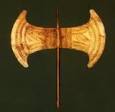
That is interesting
a reply to: zardust
Oh. Well thank you for putting that image in my head, Zardust. Lol!
I don't know if you followed Log's link about the coins or not, but in it the writer was talking about the humour that the Celts employed - hiding faces in the designs, double meanings to things etc.
I've been wondering about that - humour and Picts are never equated, but I wondered. What do you think of this double crescent? Labrys - ish?
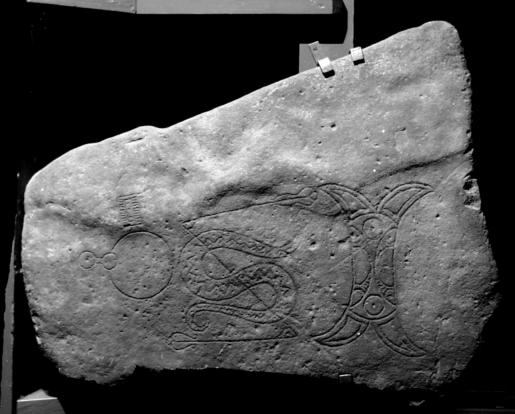
Oh. Well thank you for putting that image in my head, Zardust. Lol!
I don't know if you followed Log's link about the coins or not, but in it the writer was talking about the humour that the Celts employed - hiding faces in the designs, double meanings to things etc.
I've been wondering about that - humour and Picts are never equated, but I wondered. What do you think of this double crescent? Labrys - ish?

a reply to: beansidhe
Saint Patrick in the 5th century mentions them in his Letter to Coroticus, he calls them 'apostate Picts'. But he is talking only about the southern picts. The northern picts were converted to Christianity in the 6th century.
Christianity first came to Britain in the 1st Century AD, with the Romans. Even though it wasn't wide spread, it was still practiced. It was treated like any other cult that they followed, but as it asked you to only worship one god it was treated with suspicion by the authorities, forcing them to worship in secret. It wasn't until the 4th century that it became ok to practice Christianity openly in the roman world. Even then it was a minor religion in Britain practiced only by outsiders, as the pagan religion was still practiced by most of the population.
Then the romans left and the Saxons, Angles and Jutes arrived and Christianity was pushed to the very edge of Britain in the west, right up to the dark ages.
Saint Patrick in the 5th century mentions them in his Letter to Coroticus, he calls them 'apostate Picts'. But he is talking only about the southern picts. The northern picts were converted to Christianity in the 6th century.
Christianity first came to Britain in the 1st Century AD, with the Romans. Even though it wasn't wide spread, it was still practiced. It was treated like any other cult that they followed, but as it asked you to only worship one god it was treated with suspicion by the authorities, forcing them to worship in secret. It wasn't until the 4th century that it became ok to practice Christianity openly in the roman world. Even then it was a minor religion in Britain practiced only by outsiders, as the pagan religion was still practiced by most of the population.
Then the romans left and the Saxons, Angles and Jutes arrived and Christianity was pushed to the very edge of Britain in the west, right up to the dark ages.
a reply to: urbanghost
Scotland was different. St Ninian tells us the druids practised something akin to the Hebrew 'christianity' (I'm calling it that, I have no idea if that is the right term or not, but basically old testament stuff) - he is said to have been surprised by this.
The Romans never made it in Scotland, nor the Angles, nor the Jutes. Our history is different.
The Picts didn't inhabit a Roman world in the same way that the rest of Britain did. Our authorities were not Roman authorities and so Tertullian's words are interesting.
That's what we're trying to pick apart - so often British history ignores Scotland, apart from a cursory mention to the barbarian heathen Picts. And so dating stones becomes hard when framed through a British lense.
Scotland was different. St Ninian tells us the druids practised something akin to the Hebrew 'christianity' (I'm calling it that, I have no idea if that is the right term or not, but basically old testament stuff) - he is said to have been surprised by this.
The Romans never made it in Scotland, nor the Angles, nor the Jutes. Our history is different.
The Picts didn't inhabit a Roman world in the same way that the rest of Britain did. Our authorities were not Roman authorities and so Tertullian's words are interesting.
That's what we're trying to pick apart - so often British history ignores Scotland, apart from a cursory mention to the barbarian heathen Picts. And so dating stones becomes hard when framed through a British lense.
a reply to: beansidhe
That's the thing, nobody knows what St Ninian said, so he couldn't have said anything about the druids religion. Bede gives the first mention of him in 731 and even says that what he wrote is just legend. There is no other mention of him for another 400 years.
Even though there is very little written about the druids, from archaeological finds it is known that what the druids practiced had little relation to Christianity.
The theory of the Druids and Christianity comes from the 19th century when a guy called G. D. Barber claimed that he had translated an ancient welsh manuscript about the druids perfectly into Aramaic and the translation gave bible passages, like the lords prayer. The first problem was the way he translated it. He basically translated everything literally and then disposed of the words that didn't fit in. Then he moved the remaining words around to make sense. The second problem is the manuscript he translated. It was a forgery by Iolo Morganwg.
That's the thing, nobody knows what St Ninian said, so he couldn't have said anything about the druids religion. Bede gives the first mention of him in 731 and even says that what he wrote is just legend. There is no other mention of him for another 400 years.
Even though there is very little written about the druids, from archaeological finds it is known that what the druids practiced had little relation to Christianity.
The theory of the Druids and Christianity comes from the 19th century when a guy called G. D. Barber claimed that he had translated an ancient welsh manuscript about the druids perfectly into Aramaic and the translation gave bible passages, like the lords prayer. The first problem was the way he translated it. He basically translated everything literally and then disposed of the words that didn't fit in. Then he moved the remaining words around to make sense. The second problem is the manuscript he translated. It was a forgery by Iolo Morganwg.
edit on 3-5-2014 by urbanghost because: (no reason given)
a reply to: beansidhe
That's what we're trying to pick apart - so often British history ignores Scotland, apart from a cursory mention to the barbarian heathen Picts. And so dating stones becomes hard when framed through a British lense.
Is there anything that could link the stone to an older legend. Are there any Scottish or pictish legends that describe a similar scene to what is being depicted? Like this one for instance.
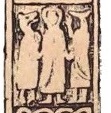
This picture is supposed to be showing the temptation of St. Anthony by demons and comes from the Penmon Cross. The demons look like people wearing horse head masks. In Welsh folklore we have the Mari Lwyd which is supposed to come from ancient celtic rites and involves people wearing horses heads.
Even on so called Christian stones the mythology can still be pre Christian, they took on a lot of pagan rituals and symbols to get the inhabitants to switch to their religion.
a reply to: urbanghost
Without rehashing too much of what's already been written in this thread, no, there are no earlier legends known. Nothing in writing has survived. Iona was said to have the greatest library in Europe at one point, but all that has gone.
It probably is Samson, because I'm fairly open to the fact that the Picts would have known about the old testament.
I know you're not keen on Iolo Morganwg, but I'm giving him the benefit of the doubt. He was right about the /I\ sign, in so far as there is one on a Pictish stone.
He also lists the important constellations, which concurs with The Last of the Druid's author regarding the boar:
"29. The Large-horned Oxen;363
30. The Great Plain;
31. The White Fork;
32. The Woodland Boar;
33. The Muscle;
34. The Hawk;..."
Another source who claims that the boar was a constellation.
Without rehashing too much of what's already been written in this thread, no, there are no earlier legends known. Nothing in writing has survived. Iona was said to have the greatest library in Europe at one point, but all that has gone.
It probably is Samson, because I'm fairly open to the fact that the Picts would have known about the old testament.
I know you're not keen on Iolo Morganwg, but I'm giving him the benefit of the doubt. He was right about the /I\ sign, in so far as there is one on a Pictish stone.
He also lists the important constellations, which concurs with The Last of the Druid's author regarding the boar:
"29. The Large-horned Oxen;363
30. The Great Plain;
31. The White Fork;
32. The Woodland Boar;
33. The Muscle;
34. The Hawk;..."
Another source who claims that the boar was a constellation.
a reply to: Gordi The Drummer
I know you love those beak-men, and speaking of constellations, have a look at Hermes' Zodiac, from Mr. MP Hall. Especially Cancer....
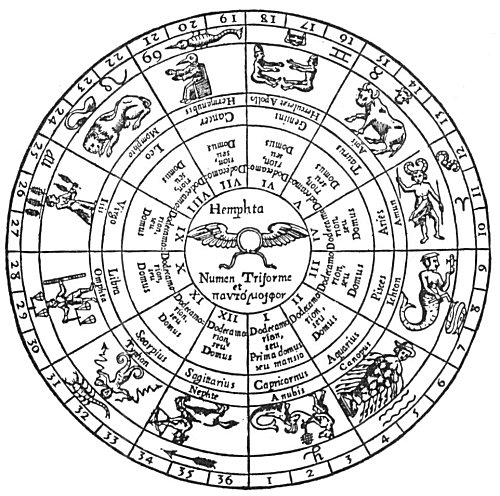
The Secret Teaching of All Ages
I know you love those beak-men, and speaking of constellations, have a look at Hermes' Zodiac, from Mr. MP Hall. Especially Cancer....

The Secret Teaching of All Ages
Did everyone else know this and I'm just catching up? We have a Serpent mound in Scotland? By Oban, of all places.
There's a good write up on the Megalithic Portal, which I'll borrow:
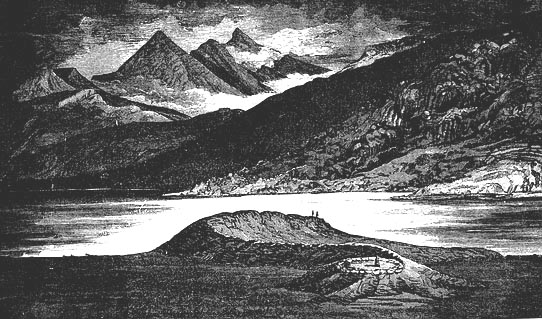
Megalithic Portal
This might make some sense of the stories of St Patrick banishing the snakes (pagans/druids?) from Ireland. Snakes in Scotland are rubbish and wouldn't be revered by anyone with any sense. They are the symbol of the tribe of Dan, of time, of wisdom etc. Can we take this as hint towards the snakes on the stones? I think it's likely.
There's a good write up on the Megalithic Portal, which I'll borrow:

‘Loch Nell is found about two miles south-east of Oban. Nearby can be found an artificial mound shaped in a double curve like a serpent. There was a circle of stones on its 'head' which corresponds with the solar circles represented on the heads of mystic serpents in Egypt. There was once an altar at the centre of the circle. This serpent mound is similar to other serpent mounds found near Greenock and in Ireland. An early Celtic tribe of the Strathclyde area, the Damnonii, were known for serpent- and sun worship, and serpent worship was also common in Argyll.’
Megalithic Portal
This might make some sense of the stories of St Patrick banishing the snakes (pagans/druids?) from Ireland. Snakes in Scotland are rubbish and wouldn't be revered by anyone with any sense. They are the symbol of the tribe of Dan, of time, of wisdom etc. Can we take this as hint towards the snakes on the stones? I think it's likely.
a reply to: Ramcheck
From Herodotus. What do you think?
Herodotus translation
Scotty / Scollotty???
From Herodotus. What do you think?
6. From Lixopaïs, they say, are descended those Scythians who are called the race of the Auchatai; from the middle brother Arpoxaïs those who are called Catiaroi and Traspians, and from the youngest of them the "Royal" tribe, [11] who are called Paralatai: and the whole together are called, they say, Scolotoi, after the name of their king; [12] but the Hellenes gave them the name of Scythians.
Herodotus translation
Scotty / Scollotty???
edit on 5-5-2014 by beansidhe because: sp
new topics
-
This is adorable you guys!
General Chit Chat: 8 hours ago -
Reprehensible Behavior
US Political Madness: 8 hours ago -
Defending the need for adherence to Old Testament commandments under the new covenant of Christ
Conspiracies in Religions: 9 hours ago
top topics
-
Reprehensible Behavior
US Political Madness: 8 hours ago, 10 flags -
Those Drones over NJ and elsewhere
Aliens and UFOs: 14 hours ago, 8 flags -
South Korean coup was an attempt to start WW3
World War Three: 14 hours ago, 7 flags -
This is adorable you guys!
General Chit Chat: 8 hours ago, 7 flags -
Archer aviation and the NJ drones
Aircraft Projects: 14 hours ago, 5 flags -
Defending the need for adherence to Old Testament commandments under the new covenant of Christ
Conspiracies in Religions: 9 hours ago, 5 flags
active topics
-
Drones everywhere in New Jersey ---and Elsewhere Master Thread
Aliens and UFOs • 174 • : nugget1 -
Defending the need for adherence to Old Testament commandments under the new covenant of Christ
Conspiracies in Religions • 16 • : randomuser2034 -
-@TH3WH17ERABB17- -Q- ---TIME TO SHOW THE WORLD--- -Part- --44--
Dissecting Disinformation • 3708 • : hangedman13 -
The Mystery Drones and Government Lies --- Master Thread
Political Conspiracies • 106 • : cherokeetroy -
Statements of Intent from Incoming Trump Administration Members - 2025 to 2029.
2024 Elections • 45 • : WeMustCare -
Former DNI-Congressman John Ratcliffe says the U.S. Government is Intimidated by UFOs.
Aliens and UFOs • 42 • : anthelion -
Post A Funny (T&C Friendly) Pic Part IV: The LOL awakens!
General Chit Chat • 7912 • : imitator -
This is adorable you guys!
General Chit Chat • 4 • : CriticalStinker -
The Acronym Game .. Pt.4
General Chit Chat • 1016 • : FullHeathen -
Could rampant land speculation have caused the Civil War?
History • 35 • : matafuchs
